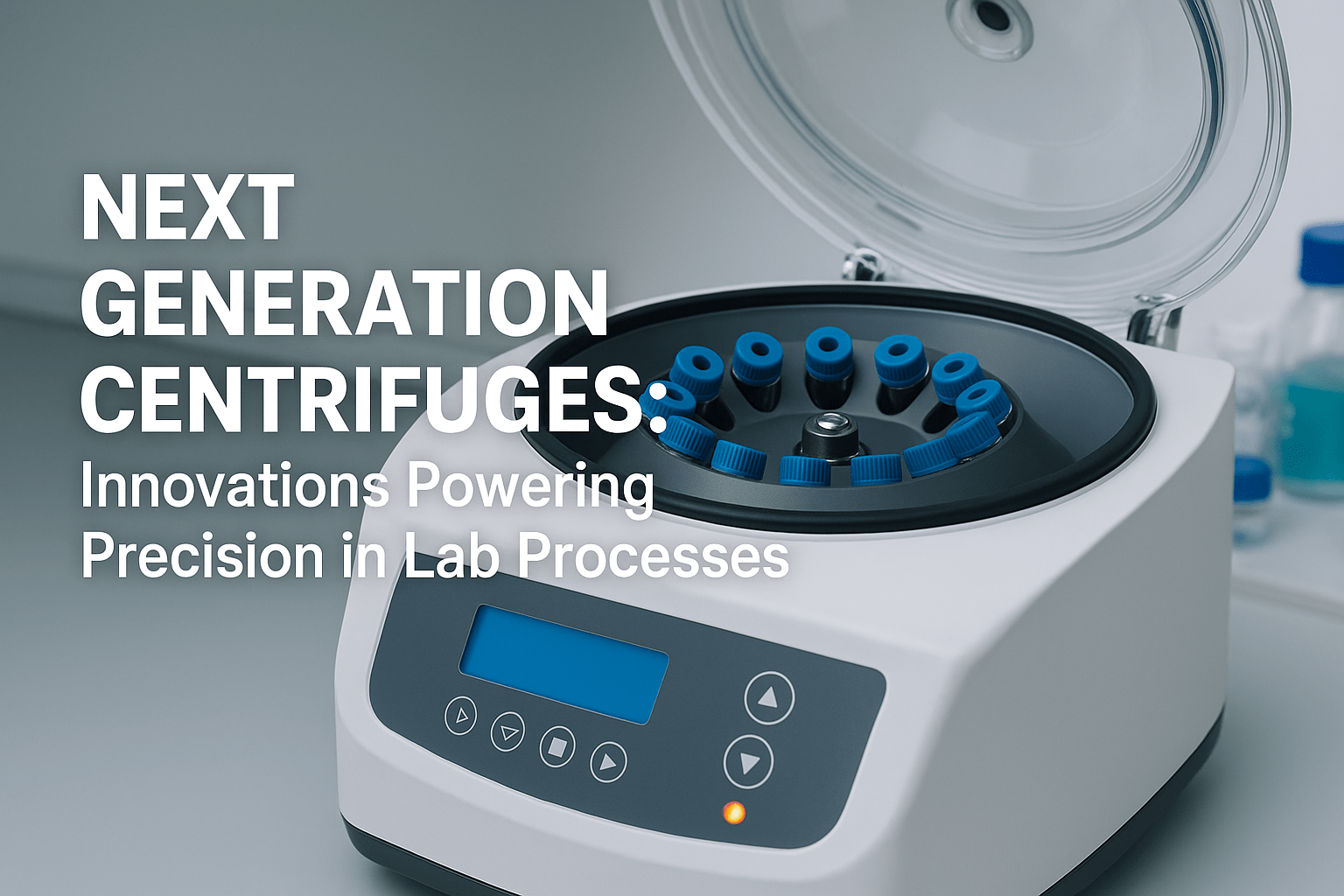Centrifugation is a crucial process in numerous scientific disciplines, which is observing substantial evolution since recent years. Next generation centrifuges are redefining efficiency, accuracy, precision, and sustainability in laboratory processes. Moreover, next generation centrifuges are incorporating smart technologies, new materials, and user-friendly designs for fulfilling the complex demands of modern science.
Benefits of Next Generation Centrifuges in Lab Processes
The primary benefits of next generation centrifuges that are transforming laboratory processes include:
Improved Precision and Reproducibility
Next generation centrifuges are often included with advanced control systems, real-time monitoring, and improved rotor designs to facilitate highly steady and precise separations. This results in improved data reproducibility, which is an essential factor in both clinical diagnostics and research fields where reliable results are necessary.
Lower Operating Costs and Increased Lifespan
Next generation centrifuges often have energy-efficient designs that results in lower utility bills. Moreover, including AI in modern centrifuges facilitates predictive maintenance features, which helps in finding possible issues before they cause costly breakdowns, in turn extending the operational lifespan of instruments and decreasing downtime.
Reduced Turnaround Times and Increased Throughput
High speeds and automation capabilities can greatly decrease processing times, which enables laboratories to handle greater volume of samples in less time. This plays an essential role in laboratory processes like advanced screening, drug discovery, and large-scale clinical testing among others.
Improved Safety and Ergonomics
Modern centrifuges usually feature advanced imbalance detection systems, durable construction, and secure rotor locking mechanisms, which assists in improving user safety. Moreover, simple designs including easy-to-load rotors and spontaneous interfaces helps in decreasing physical strain and training requirements for lab personnel.
Key Innovations
The rising shift from traditional centrifuges to their modern next generation centrifuges is mainly driven by numerous key technological advancements including:
Superior Precision, Speed, and Capacity
The most powerful innovation in next generation centrifuges includes the substantial increase in rotational speed and g-force capabilities. This is mainly obtained through improvements in motor technology, which provide greater control, lower noise, and energy efficiency.
Similarly, improvements in rotor design while using lightweight yet very strong materials like carbon fiber composites, facilitates larger sample volumes without affecting structural integrity or speed. These rotors often provide improved air-flow dynamics, in turn decreasing heat generation as well as sample degradation.
Sustainability and Energy Efficiency
The increasing global emphasis on environmental responsibility is encouraging centrifuge manufacturers to prioritize sustainability. New models of centrifuges usually include highly energy-efficient cooling systems that make use of natural refrigerants with considerably lower global warming potential (GWP) as compared to traditional hydrofluorocarbons (HFCs).
Similarly, improvements in motor design and insulation helps in decreasing the total power consumption. Additionally, manufacturers are also using recycled materials during the development of these centrifuges, demonstrating their commitment to decrease the environmental footprint of laboratory operations.
Intelligent Automation and AI Integration
Next generation centrifuges often feature spontaneous touchscreen interfaces, programmable protocols, and advanced sensors for facilitating real-time monitoring of temperature, speed, run status, and several other parameters.
In addition, combining AI and ML technologies into these systems further helps in lowering the chances of human error, simplifying complex laboratory processes, and improving efficiency among others.
Miniaturization and Portability
As high-capacity centrifuges continue to grow, there is a rising trend towards miniaturization. The development of completely portable, compact, and battery-powered centrifuges plays an essential role in the field of research, diagnostics, and other related laboratory processes.
Conclusion
Next-generation centrifuges are considerably transforming laboratory processes with key innovations that are mainly focused on improved precision, efficiency, safety, sustainability, and miniaturization. These advancements mostly include improvement in rotor designs, user-friendly interfaces, and sustainable cooling systems, which results in more reliable and simplified lab processes. Moreover, the ability of modern centrifuges to seamlessly combine with other automated lab instruments and data management systems will further improve their effectiveness in complex laboratory processes. Additionally, the rising advancements associated with next generation centrifuges plays a crucial role in reshaping scientific discovery across a wide range of disciplines.
